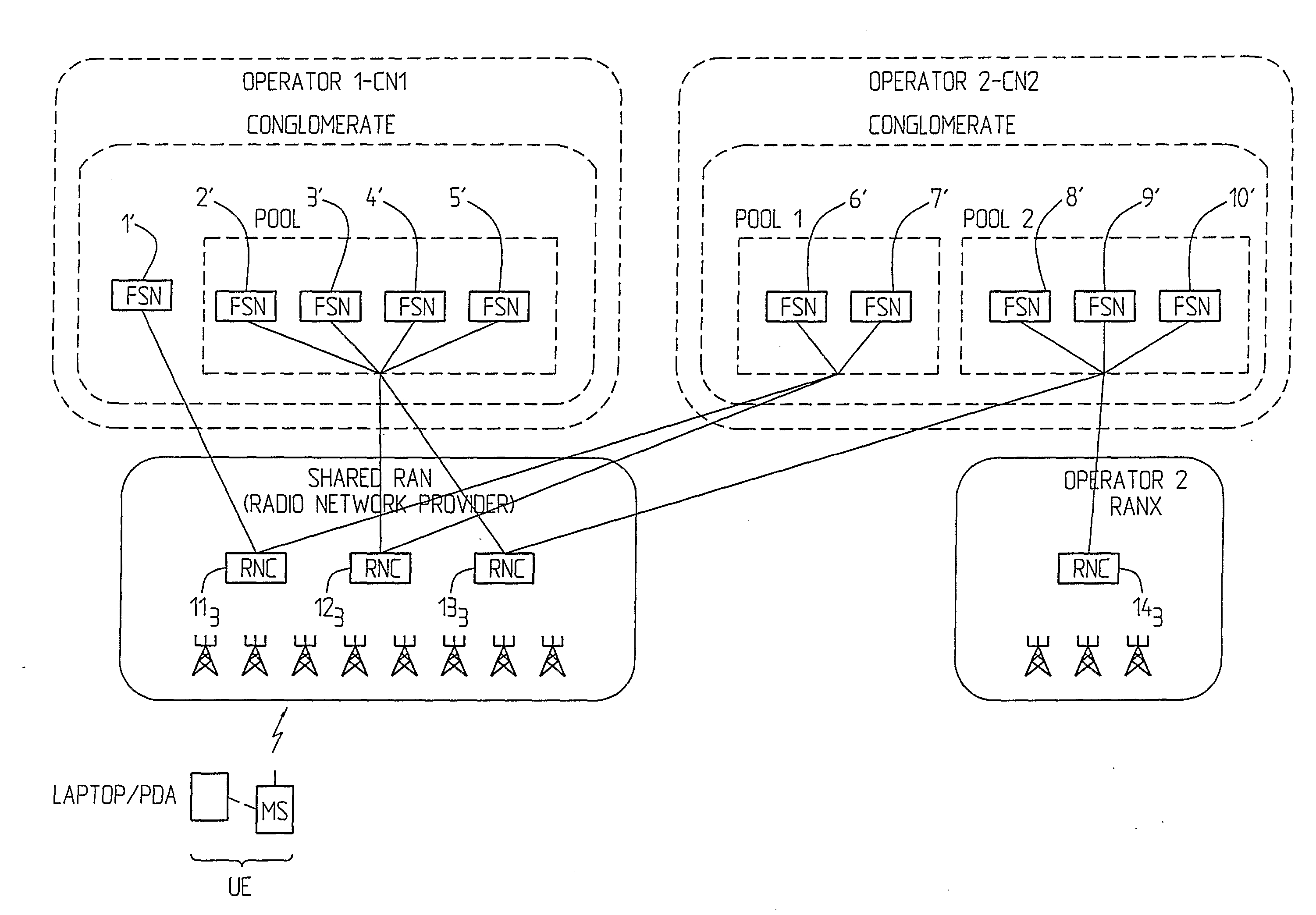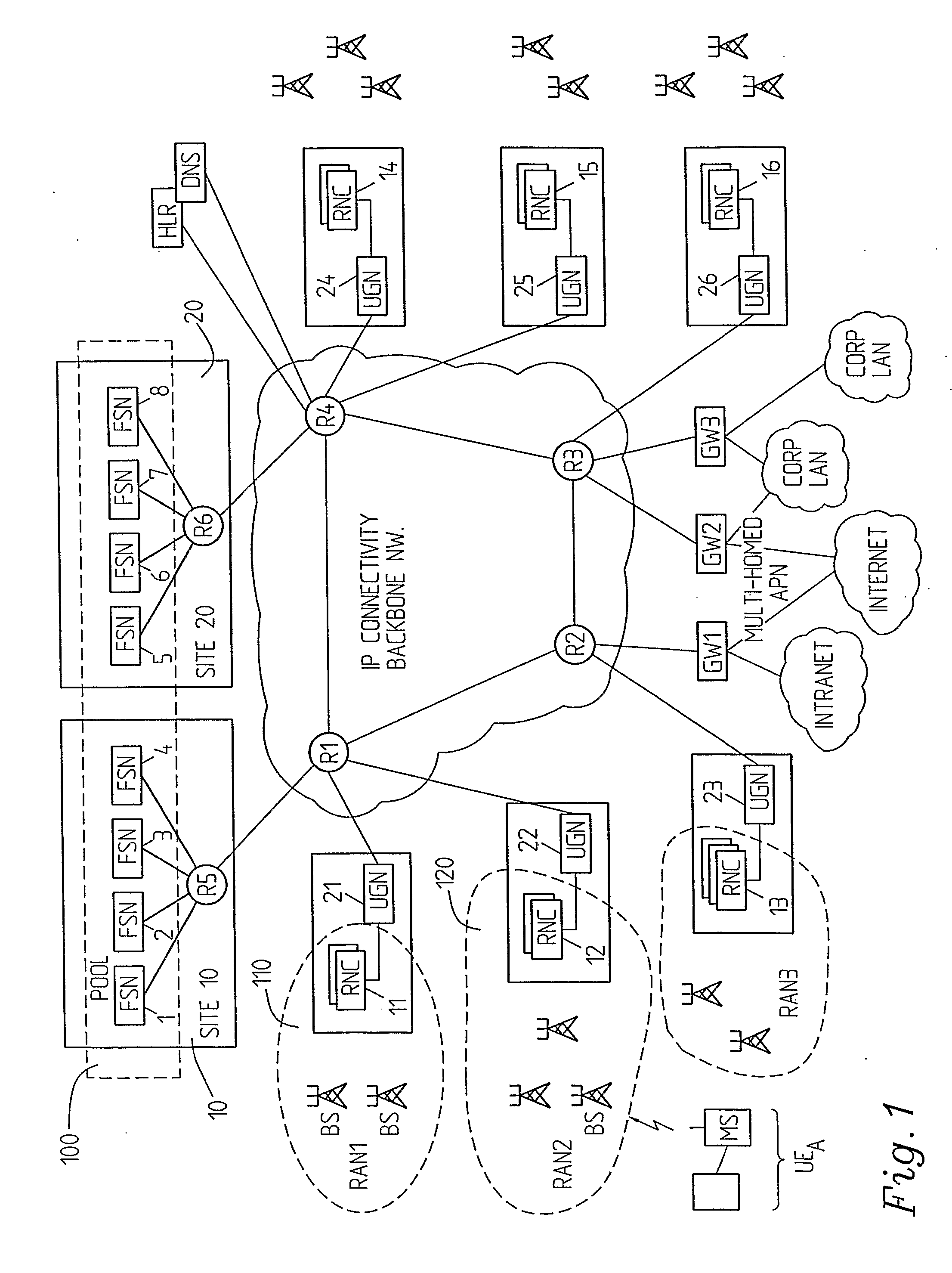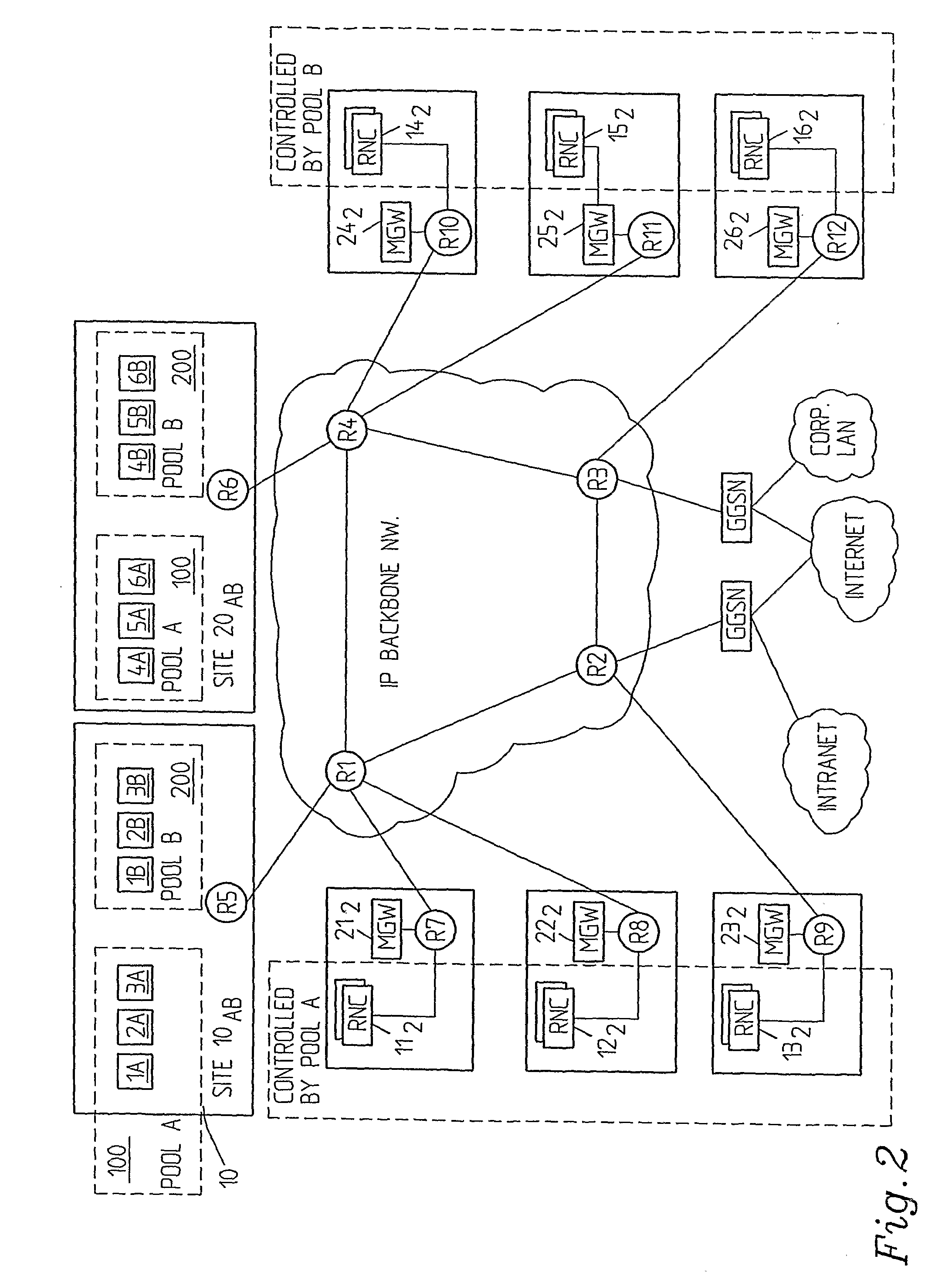Arrangement and a Method in Communication Networks
a communication network and arrangement method technology, applied in the field of arrangement and a method in communication networks, can solve problems such as inability to meet the needs of customers, so as to achieve the effect of improving and less complex mechanisms
- Summary
- Abstract
- Description
- Claims
- Application Information
AI Technical Summary
Benefits of technology
Problems solved by technology
Method used
Image
Examples
Embodiment Construction
[0026]FIGS. 1-3 show examples on communication systems or networks wherein the inventive concept can be implemented and which implement pools or conglomerates respectively of functional server nodes.
[0027]FIGS. 1 and 2 show so called split (up) architectures in which the functionality of a packet data support node is split in two nodes.
[0028]FIG. 3 shows a monolithic architecture, i.e. there is no split but the entire functionality is provided by a single node. It should be clear that particulars of FIGS. 1, 2 can be implemented also in monolithic architecture, and, vice versa, that particulars of FIG. 3 can be implemented in a split architecture.
[0029]FIG. 4 shows an example of an environment with shared networks implementing conglomerates, i.e. there are different operators involved.
[0030]More specifically FIG. 1 shows a communication system (e.g. GPRS or UMTS) supporting communication of packet data. It comprises an IP connectivity backbone network and a number of radio neworks R...
PUM
 Login to View More
Login to View More Abstract
Description
Claims
Application Information
 Login to View More
Login to View More - R&D
- Intellectual Property
- Life Sciences
- Materials
- Tech Scout
- Unparalleled Data Quality
- Higher Quality Content
- 60% Fewer Hallucinations
Browse by: Latest US Patents, China's latest patents, Technical Efficacy Thesaurus, Application Domain, Technology Topic, Popular Technical Reports.
© 2025 PatSnap. All rights reserved.Legal|Privacy policy|Modern Slavery Act Transparency Statement|Sitemap|About US| Contact US: help@patsnap.com



